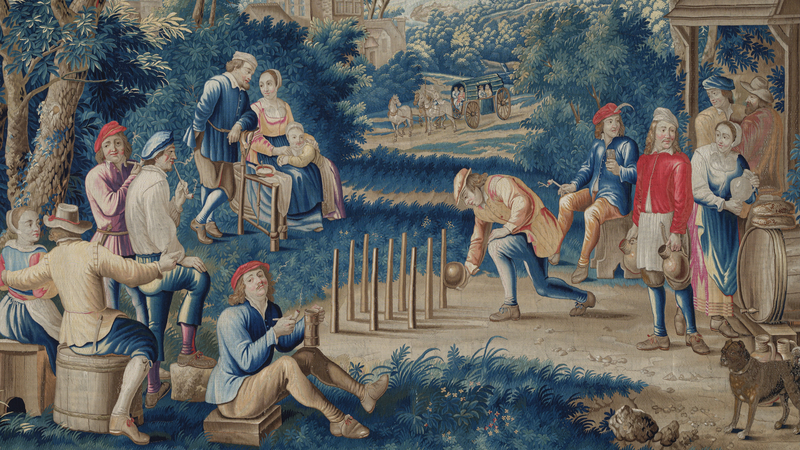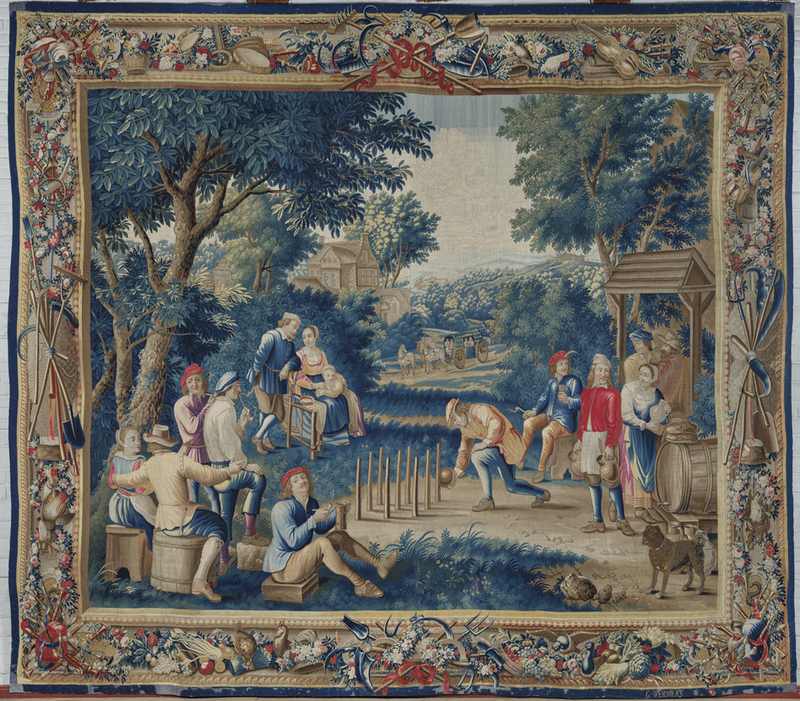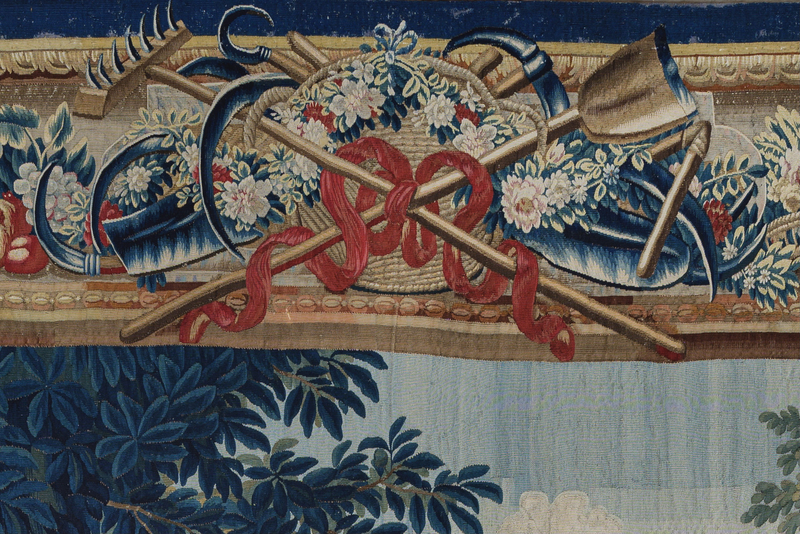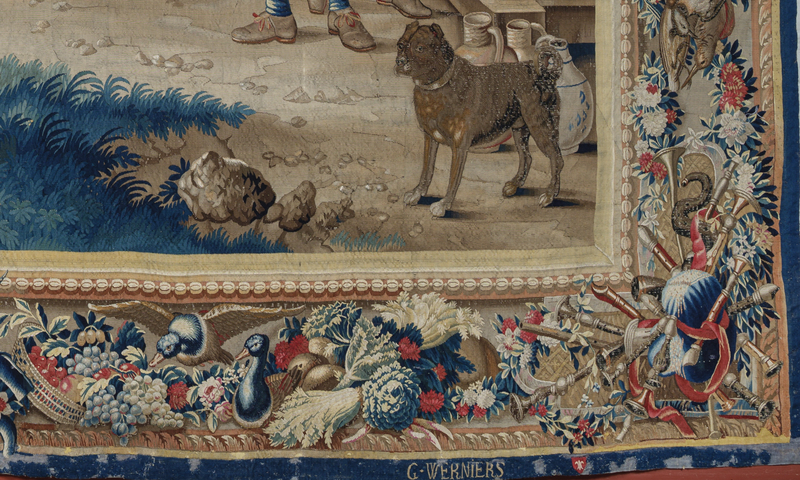Teniers - Scenes of country life - The Ninepins.
Werniers’ scenes of Teniers are known to be a complete set of eight tapestries. They all depicted separate themes known as; Village fête, Game of cards, Harvest of the Garden and Field, The Shepherd, The Spinner, The Ninepins, Country activities and one with an unknown title. Akershus Castle’s collection only contains The Ninepins.
The scene depicts a group of farmers or country folks gathered in an open field for relaxation and play. To our right, a couple is filling mugs from a barrel of wine or ale and passing drinks around. On the top of a barrel is a stack of loaves of bread. Men, women, children and a dog are enjoying the fresh summer evening under a canopy of green leaves and with plenty of food, drinks and games. The men are smoking pipes and playing the quills in French, or Ninepins English, a form of bowling known in Europe since the middle ages and still popular today.
Halfway visible through the greenery is a cottage, and behind it, we glimpse the top of the roofs of what may be a village. Through the landscape runs a road, where a carriage drawn by three horses is approaching, maybe to join the party. In the far distance is a mansion or a castle.
Four different designs of borders are known. This tapestry’s border picks up and continues the theme of country life, with interwoven flowers and vegetables, ducks and hens, farmers’ tools, and musical instruments.
The quality and depiction of the landscapes and the perfect integration of the figures in the composition make it a masterpiece within the Flemish tradition of the art of tapestry. After all, Lille was a part of Flanders and came under French rule only in 1667.




